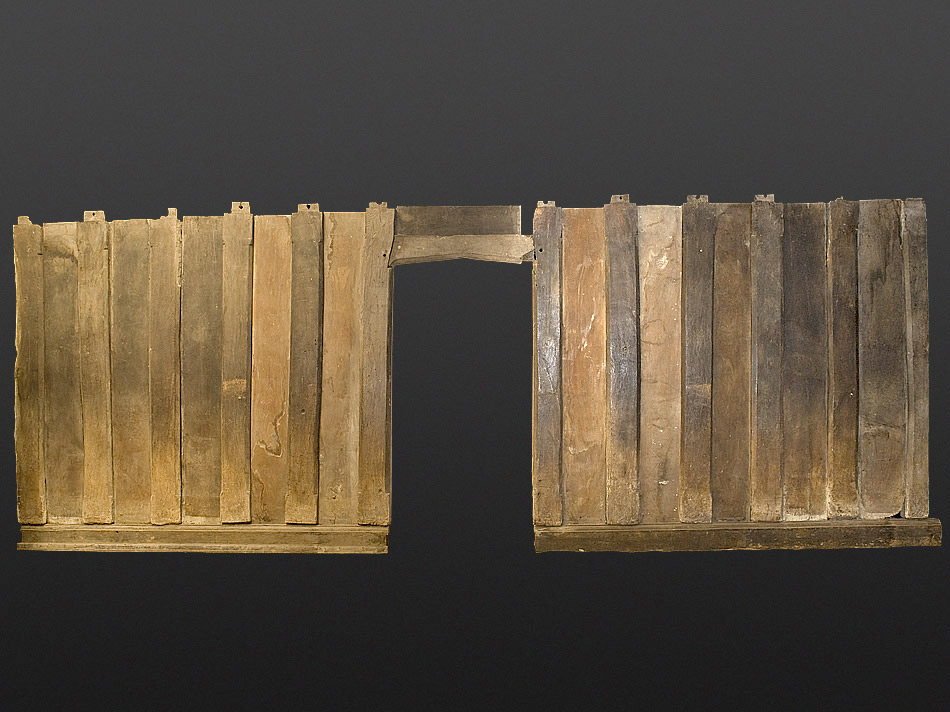Late Medieval East Devon oak plank and muntin screen
Circa 1500
East Devon
W 248.5" × H 98"
Stock # MARH0229
SOLD
Late Medieval East Devon oak plank and muntin screen. This massive screen is composed of vertical ‘studs’ grooved to accept boards and tenoned into a head rail above and a sill below. In its original position, the screen would have functioned as a non-load bearing partition dividing a large hall into smaller chambers or separating a passage into multiple aisles. Screens of this type were common internal features of late medieval buildings, but become less common as architecture progressed and living space was sectioned into ever smaller and more discreet rooms. The majority of late medieval plank and muntin screens have been extracted from their original settings during later domestic renovations and are now lost. Once removed, they were usually altered and adapted, leaving little trace of original form or function. This example is remarkable both for its large size (twenty feet long) and relatively intact condition. It is also more visually elaborate than most, featuring a passageway header configured as a Gothic cusped-arch and muntins run with chamfers which end in undercut, lambs-tongue stops.
Recovered from an early house in Sidmouth, Devon.
Undisturbed deep reddish-brown surface with variations in patina consistent with centuries of hand-contact.
Some replacements and alterations consistent with use and later adaptation. Sills are later, but period replacements- the original sills would have been embattled in the framing of surrounding architecture. Some boards replaced with latter elm.
* A related plank and muntin screen remains in situ in a late medieval yeoman’s house known as Maker’s at Broadclyst, near Exeter, Devon and is illustrated in James Ayres, Domestic Interiors: The British Tradition, 1500-1850, p. 142, fig. 203
